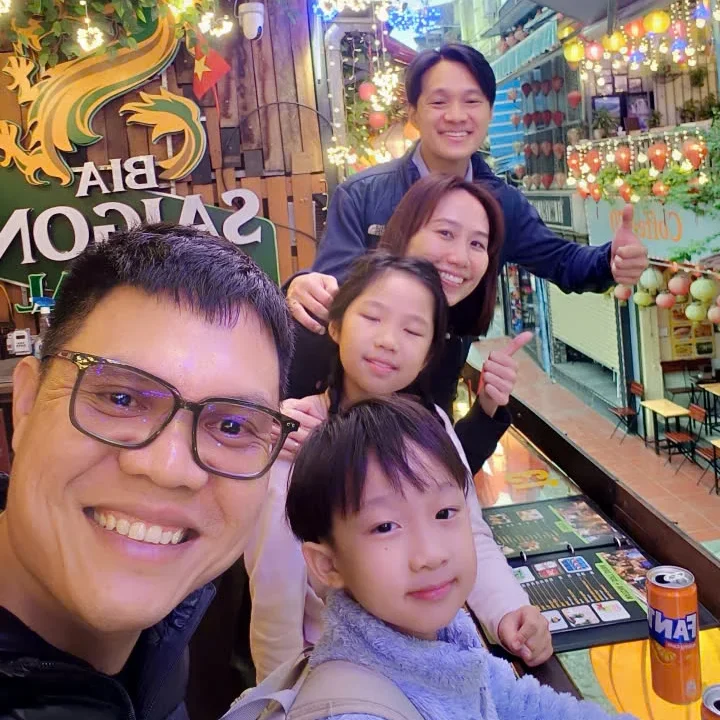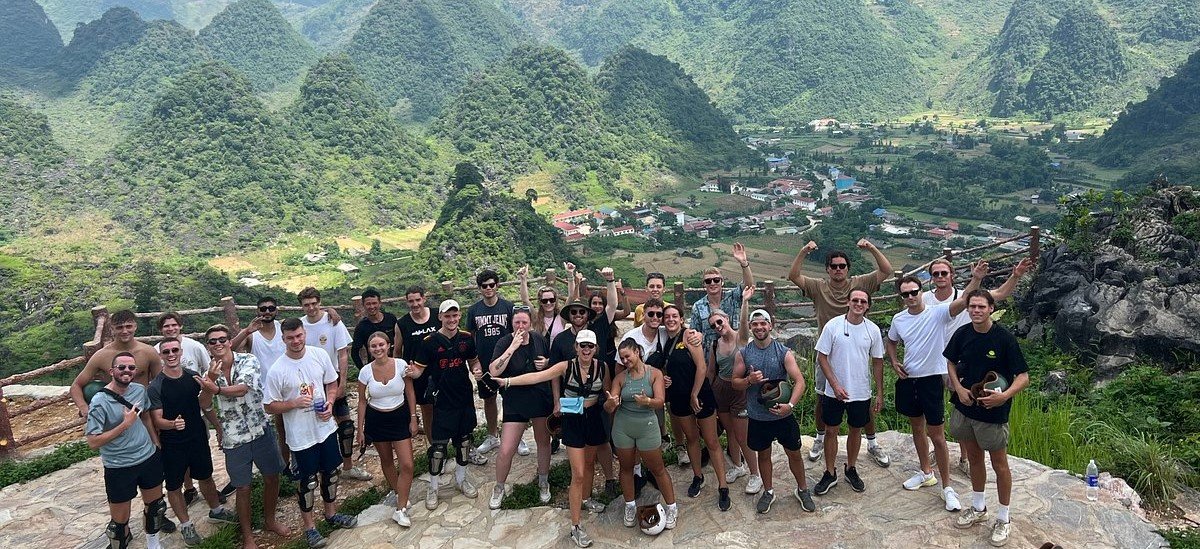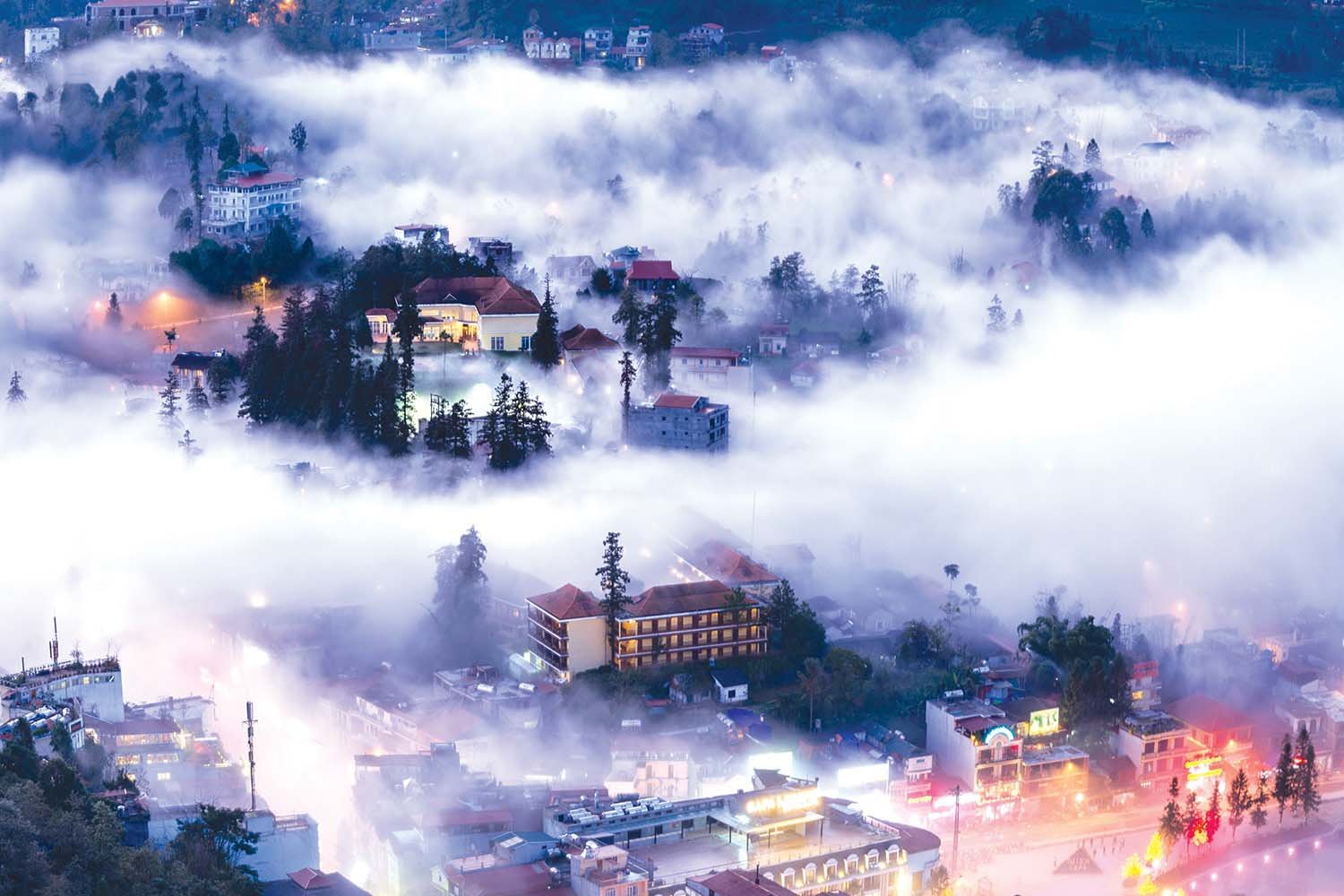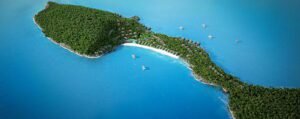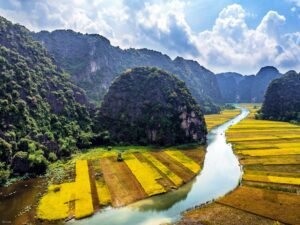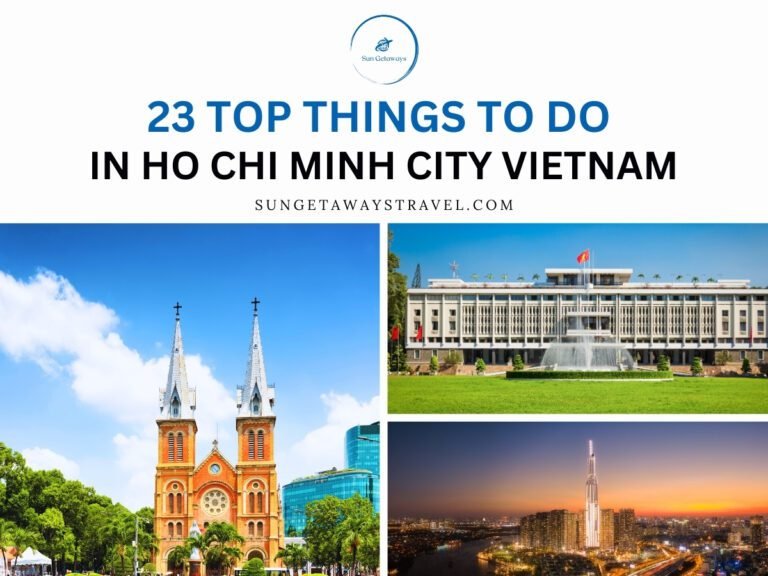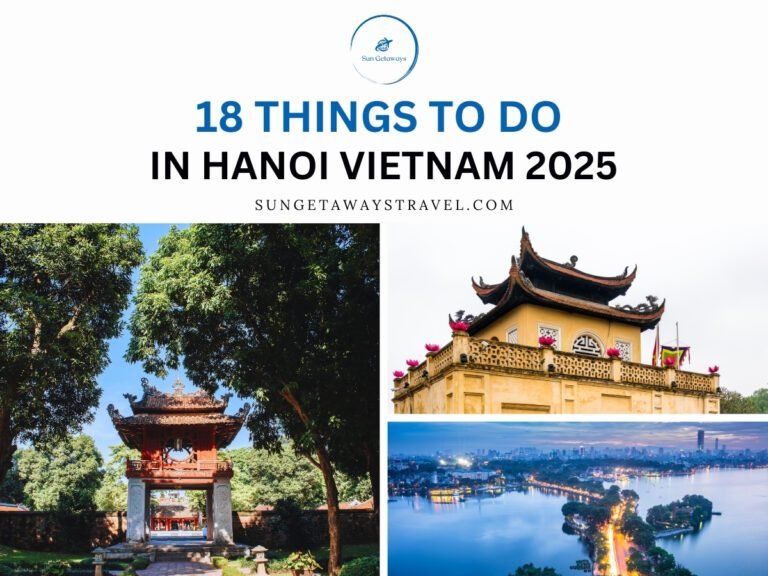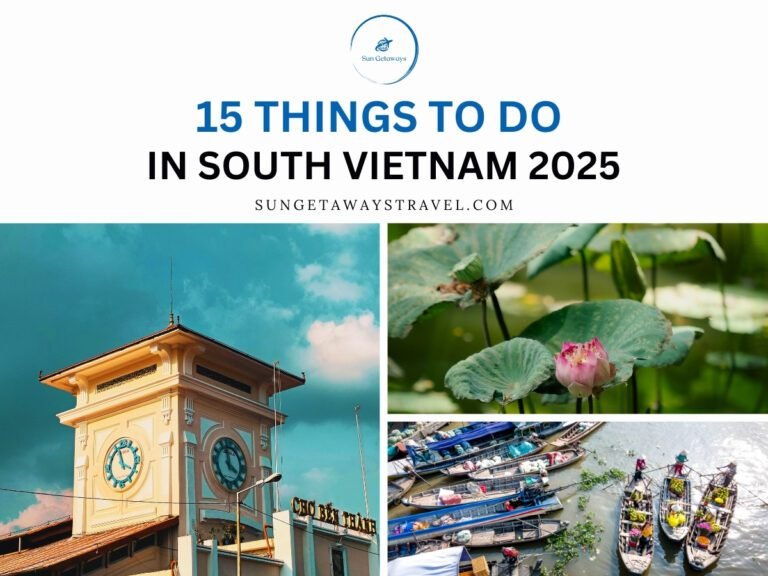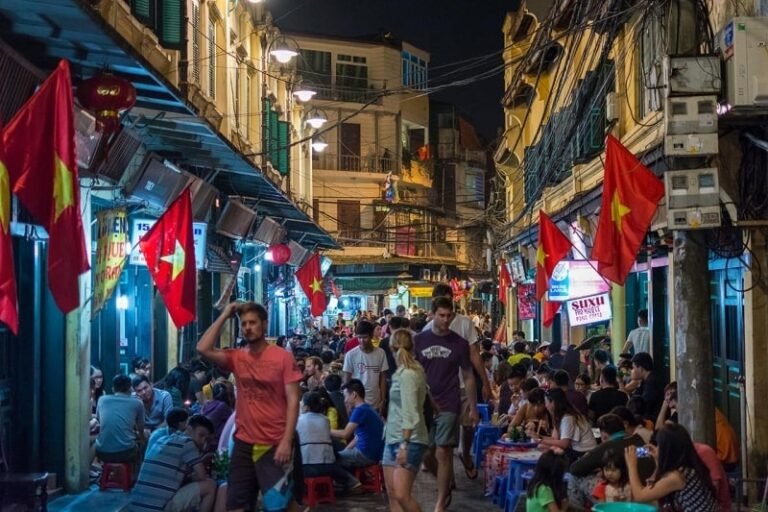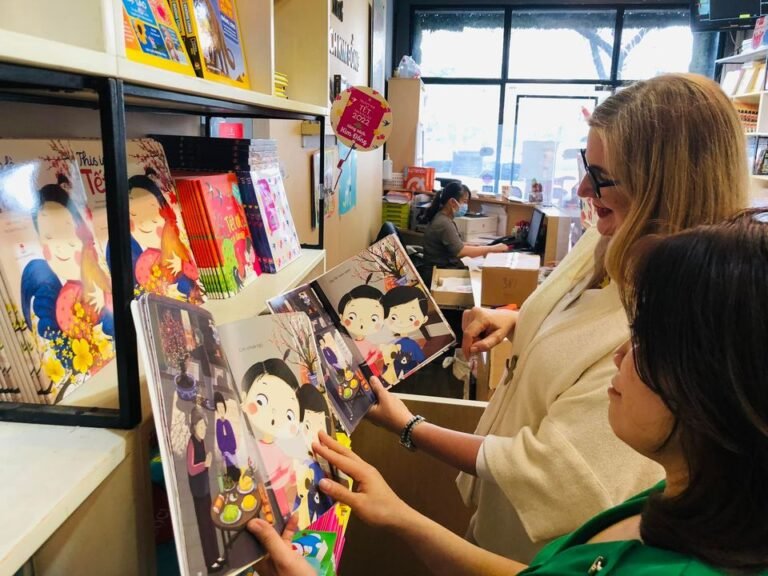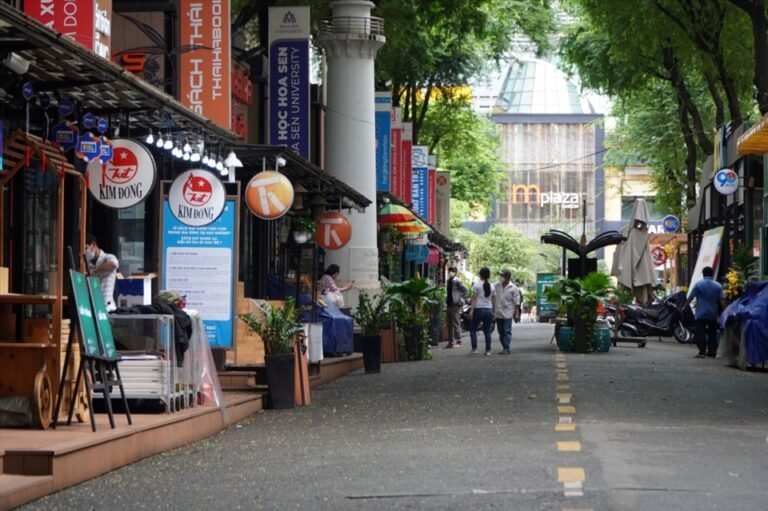My Son Sanctuary Guide: Exploring the Ancient Cham Ruins in Vietnam
Nestled in the lush jungles of central Vietnam, My Son Sanctuary is one of the most remarkable archaeological sites in Southeast Asia. This ancient complex, built by the Cham civilization between the 4th and 14th centuries, served as a religious and cultural hub. For history lovers and travelers looking to explore Vietnam‘s rich past, this My Son Sanctuary Guide provides everything you need to know before visiting this UNESCO-listed site.
1. A Brief My Son Sanctuary History
My Son Sanctuary‘s origins date back over 1,600 years when it was established by the Champa civilization. The site was dedicated to Shiva, one of Hinduism’s principal deities, and became a spiritual center for the Cham people. Despite wars, natural disasters, and time, the sanctuary remains a significant historical landmark.

The Golden Age of the Champa Kingdom
- The first temples were built in the 4th century under King Bhadravarman.
- My Son flourished between the 7th and 10th centuries, serving as a hub for religion and politics.
- By the 13th century, the site began to decline as the Champa Kingdom weakened and was later absorbed into Vietnamese rule.
Rediscovery and Preservation Efforts
- The French discovered the ruins in 1898, leading to early restoration attempts.
- Bombings during the Vietnam War destroyed many structures, leaving some only partially standing.
- Today, UNESCO and Vietnamese authorities work to preserve and protect this invaluable site for future generations.


Architectural Features of My Son Sanctuary
The sanctuary is an architectural marvel, constructed using baked bricks and a special resin-like adhesive, which remains a mystery to modern historians. Its temples feature ornate bas-reliefs, intricate stone sculptures, and a unique tower-like design. These structures reflect the distinct religious and artistic influences of Indian Hinduism blended with Cham craftsmanship.
🦐 Explore the vibrant flavors of Da Nang street food! Dive into delicious local dishes
2. What to See at My Son Sanctuary
Main Temple Complexes
The site is divided into several groups, labeled A to G. Each group features unique architectural elements reflecting different periods of Cham artistry. Some highlights include:
- Group B, C, and D – The most well-preserved structures, showcasing red brick towers and detailed reliefs.
- Group A – Heavily damaged but historically significant as the main religious complex.
- Group G – A fascinating example of Cham brickwork and construction techniques.
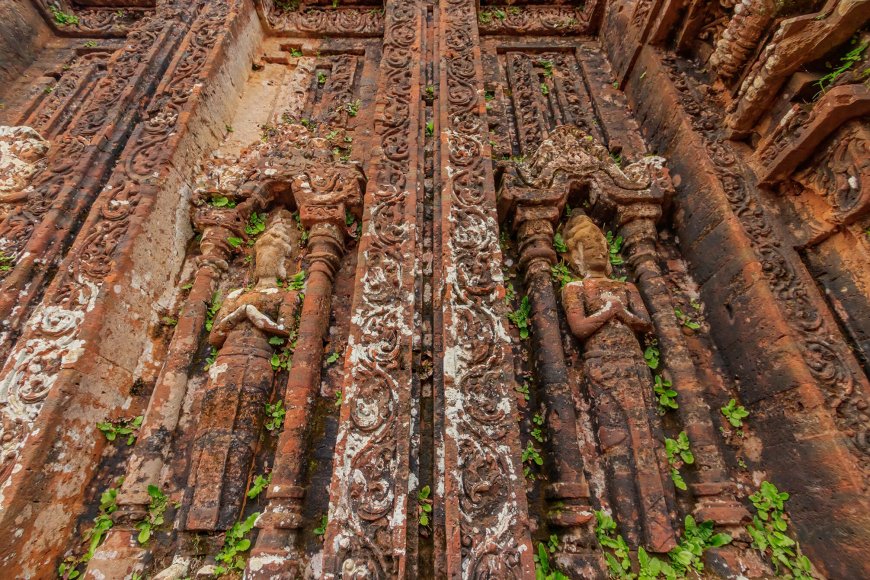

Stone Inscriptions and Sculptures
Throughout the sanctuary, visitors can find stone inscriptions in Sanskrit and Cham script, offering glimpses into the political and religious landscape of the time. Exquisite sculptures of Hindu gods, celestial dancers, and mythical creatures add to the site’s mystical charm.
The Cham Museum
For travelers seeking a comprehensive understanding of My Son Sanctuary history, a visit to the Cham Museum near the entrance of My Son Sanctuary is a must, offering a rich collection of artifacts and detailed insights into the area’s cultural heritage.


This museum serves as an excellent starting point for any My Son Sanctuary Guide, enhancing your exploration with historical context about the ancient civilization that once thrived there. With its well-preserved exhibits, it provides a fascinating glimpse into the architectural and spiritual significance of this UNESCO World Heritage site.
☘ Find more things to discover via these articles: Hoi An Tailor, Hoi An Lantern Festival, and Hoi An Street Food
3. Best Time to Visit My Son Sanctuary
Ideal Seasons
- Dry Season (February – August) – Sunny weather and clear skies make for the best experience.
- Rainy Season (September – January) – Lush greenery adds to the sanctuary’s charm, but expect occasional downpours.


Best Time of Day
- Early Morning (5:30 AM – 7:00 AM) – Avoid crowds and witness the ruins in the soft morning light.
- Late Afternoon (3:00 PM – 5:00 PM) – Enjoy cooler temperatures and fewer tourists.
4. How to Get to My Son Sanctuary
From Hoi An
- Motorbike – A popular choice for independent travelers (50 km, about 1.5 hours).
- Tour Bus – Many agencies in Hoi An offer guided tours.
- Private Car – A comfortable but pricier option.


From Da Nang
- Motorbike or Car – A scenic 1.5-hour drive from Da Nang.
- Public Bus + Taxi – Less convenient but budget-friendly.
5. Travel Tips for Exploring My Son Sanctuary
What to Wear and Bring
- Lightweight clothing – The tropical climate can be humid.
- Comfortable shoes – Uneven terrain requires good footwear.
- Hat and Sunscreen – Limited shade makes sun protection essential.
- Water and Snacks – No vendors inside the site.


Respecting the Site
- Do not climb on the ancient structures.
- Avoid touching fragile carvings.
- Dispose of waste properly to preserve the environment.
☘ Read more: Da Nang’s best things to do & Travel Guide or Da Nang Day Trips
6. Cham Ruins Beyond My Son Sanctuary
The My Son Sanctuary Guide often highlights the famous UNESCO World Heritage site, but the Cham civilization left behind many other remarkable ruins worth exploring. Beyond My Son Sanctuary, these ancient structures showcase the rich history, Vietnamese architecture, and spiritual significance of the Cham people. From coastal cities to remote provinces, these sites offer a deeper dive into Vietnamese culture tapestry for travelers seeking more than just the My Son Sanctuary Guide.
Po Nagar Cham Towers
Situated in the coastal city of Nha Trang, the Po Nagar Cham Towers stand as some of the best-preserved Cham structures still actively used for worship today. These towers, built between the 7th and 12th centuries, reflect the artistic and religious brilliance of the Cham kingdom, making them a must-visit for those following the My Son Sanctuary Guide. Visitors can marvel at the detailed brickwork and learn about the Hindu influences that shaped this sacred site.


Bang An Tower
Nestled in Quang Nam province, the Bang An Tower is a lesser-known gem that features a rare octagonal design, setting it apart from other Cham ruins listed in the My Son Sanctuary Guide. This solitary tower, constructed in the 11th century, offers a peaceful retreat for history enthusiasts looking to explore beyond the typical tourist trail. Its unique shape and serene surroundings make it a fascinating addition to any journey through Cham heritage.


Phan Rang’s Cham Temples
In Phan Rang, the Po Klong Garai and Po Re Me towers provide a stunning glimpse into the architectural prowess of the Cham civilization, complementing the insights from the My Son Sanctuary Guide. These temples, perched on hilltops, were built to honor Cham kings and deities, blending intricate stonework with breathtaking views of the surrounding landscape. For travelers eager to uncover more Cham history, these sites are essential stops that enrich the narrative of Vietnam’s ancient past.


7. Local Culture and Cham Traditions
Visiting My Son Sanctuary is not just about seeing ancient ruins—it’s an opportunity to experience Cham traditions that have been passed down through generations.
Traditional Cham Music and Dance
Cham cultural performances often take place at the sanctuary, featuring traditional music played on native instruments and dances that tell Hindu mythology stories. These performances offer a deeper connection to the spiritual and artistic heritage of the Cham ruins people.
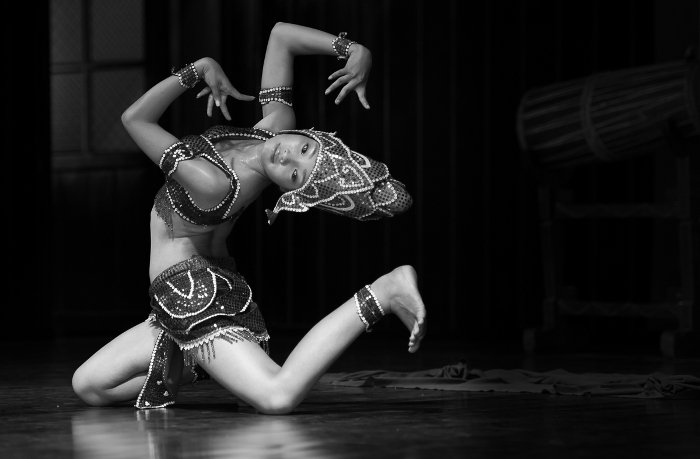

Cham Handicrafts and Cuisine
- Cham Weaving – Intricate handwoven textiles are still produced using traditional techniques.
- Cham Pottery – Beautiful clay pottery crafted using methods passed down for centuries.
- Cham Cuisine – Unique dishes influenced by both Vietnamese and Cham traditions, such as fish curries and spiced rice dishes.


8. FAQs About My Son Sanctuary
1. How much is the entrance fee for My Son Sanctuary?
The entrance fee is approximately 150,000 VND (~$6.50 USD), including museum access and an electric shuttle ride to the site.
2. Can I visit My Son Sanctuary without a tour guide?
Yes, but hiring a guide enhances your understanding of My Son Sanctuary history and architecture.
3. How long does it take to explore My Son Sanctuary?
Most visitors spend around 2–3 hours exploring the site.
4. Are drones allowed in My Son Sanctuary?
Drone usage is restricted without prior permission from site authorities.
5. What’s the best way to photograph My Son Sanctuary?
Visit early for the best lighting, use a wide-angle lens, and capture details of the intricate carvings.
By following this My Son Sanctuary Guide, you’ll gain a deeper appreciation of Vietnam’s ancient Cham ruins civilization and its lasting legacy.
9. Conclusion: Why Visit My Son Sanctuary?
Exploring the wonders of My Son Sanctuary offers an unforgettable journey into Vietnam’s rich cultural and historical heritage, making it a must-visit destination for travelers seeking a deeper connection with the past. This comprehensive My Son Sanctuary Guide highlights the ancient Cham temples, a UNESCO World Heritage Site, where intricate architecture and spiritual significance blend seamlessly to captivate visitors.
Experience Vietnam like never before with Sun Getaways Travel. Our all-inclusive trips cover every detail, from accommodations and transportation to unforgettable experiences, depending on your interests (Our Customized Private Tour for each customer to Vietnam 🇻🇳). Ready to embark on your next adventure?
Ask a question
Leave a Comment (0)
No questions yet. Be the first to ask a question!

